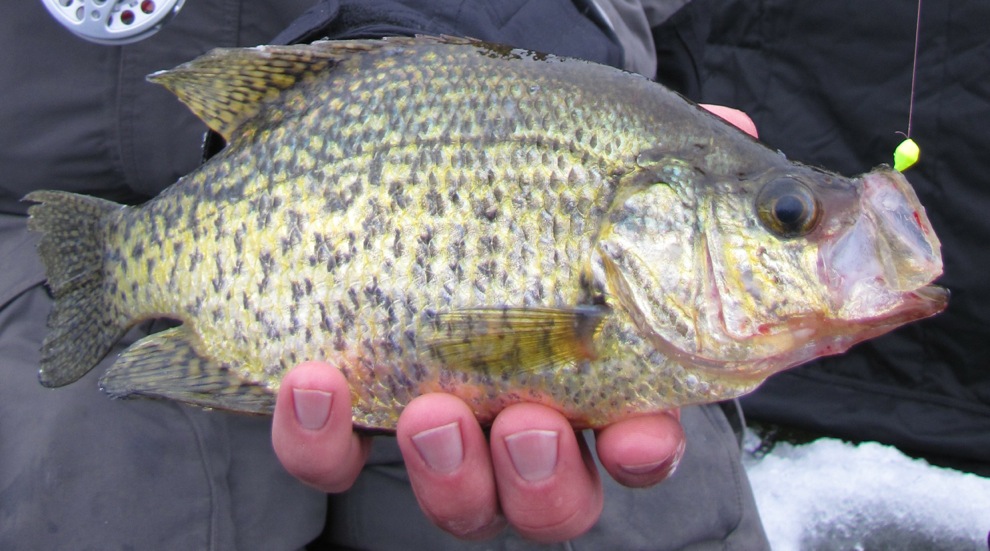The large majority of anglers who target crappies tend to do so during the first or last couple of hours of daylight. While this is a very productive way to target numbers of fish, many anglers don’t often fish much later than dark and are missing out on some great fishing opportunities. This is especially true from the end of the spawn through summer, when some of the biggest crappies are caught in the middle of the night.
 The main reason crappies go on a feeding binge during the darker hours is due to their increased sight advantage over their prey. For smaller crappies this is because zooplankton will rise up in the water column and suspend during the low-light hours. Larger crappies, however, tend to prey upon the other smaller species that also come to feed on the zooplankton. Depending on the body of water, this small prey species can be anything from young of the year bluegills to shiners, though in any waters where there are large numbers of small perch you can bet that they will be a slab’s first choice. Crappies actually have the largest sized eyes in comparison to the rest of their bodies of any freshwater fish, so even though they lack the advanced tapetum layer that walleyes have, they are very good predators during periods of reduced light penetration. This is mostly because large eyes allow more light in and allow crappies to see much better than their prey.
The main reason crappies go on a feeding binge during the darker hours is due to their increased sight advantage over their prey. For smaller crappies this is because zooplankton will rise up in the water column and suspend during the low-light hours. Larger crappies, however, tend to prey upon the other smaller species that also come to feed on the zooplankton. Depending on the body of water, this small prey species can be anything from young of the year bluegills to shiners, though in any waters where there are large numbers of small perch you can bet that they will be a slab’s first choice. Crappies actually have the largest sized eyes in comparison to the rest of their bodies of any freshwater fish, so even though they lack the advanced tapetum layer that walleyes have, they are very good predators during periods of reduced light penetration. This is mostly because large eyes allow more light in and allow crappies to see much better than their prey.
It can be daunting to try and figure out where the crappies actually go during the night. But more often than not, they simply slide into shallower water near weeds to follow the prey that is moving in to feed on the increased insect activity. Start to fish for these slabs with a 1/32 or 1/16 oz jig with a crappie minnow suspended halfway off the bottom. The reasoning for this is that due to the placement of eyes on a crappies head they will notice your bait a lot easier if it is placed above them. New this year are two smaller sizes of the Thill Splash-Brite bobber. These only light up when they hit the water and the smallest size is perfectly paired with a 1/16oz jig or a 1/32oz jig and a splitshot. With the battery and light inside the bobber, you can make pinpoint casts at even long distances.
Color selection doesn’t seem to be as important during the night bite as it can be during daylight hours, though this doesn’t mean that some colors won’t outproduce others. I have always done best with the darkest colors I can find. The black and chartreuse and the orange and brown colors on the new Lindy Jig are two of my go-to colors for fishing at night. Darker colors stand out more to a fish during the night as it is never as dark under the water as a pure black jig. Movement is what will catch their eye, so a struggling minnow or slow pops of the bobber will get them chasing.
Night fishing for big slabs is a closely held secret for many seasoned anglers. Give it a try this open water season, it gives you some extra time on the water, and helps to avoid the mobs of jetskiers, pleasure boaters, and pontoons full of panfisherman that are only out during the daytime. You will also find that on most bodies of water the biggest crappies wait until after sundown to really put their feedbags on.
By: Bob Bohland

